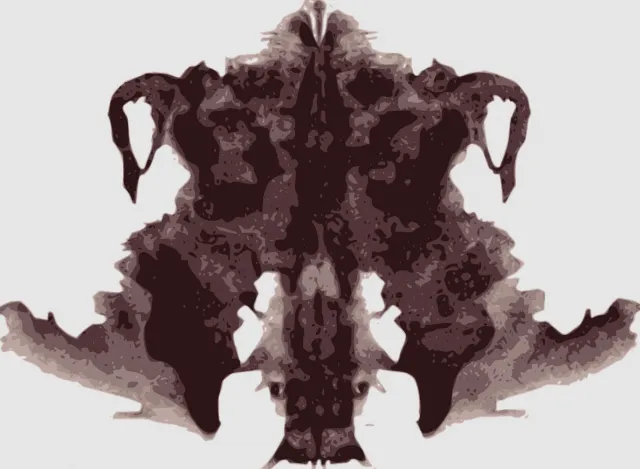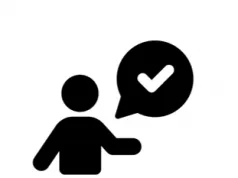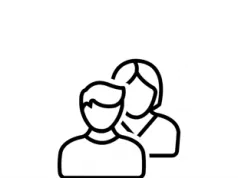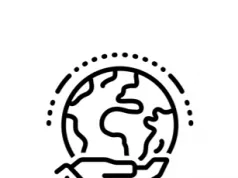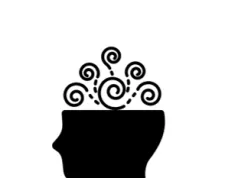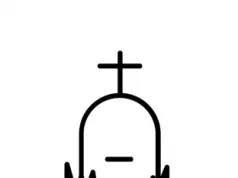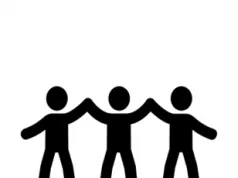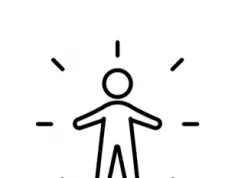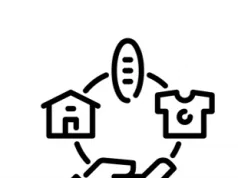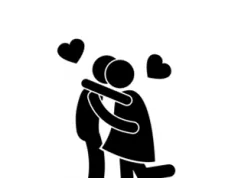The Rorschach Test is a test used in psychology which is used to first record, and then analyse, a person’s perception of various inkblots.
The Rorschach test has been used for several years, and has been used as a tool to examine a person’s personality, emotional state and the identification of potential thought disorders.
In mental health, it can sometimes be used as part of a therapy like Psychoanalytical Psychotherapy or Psychodynamic Psychotherapy – offering a unique insight into an individual.

History
Swiss psychologist Hermann Rorschach came up with the test in 1921, which was later named after him. It has also been known as the “Inkblot Test” or the “Rorschach inkblot test”.
When creating the ten inkblots used in the test, Rorschach carefully designed each inkblot. Rorschach had originally intended for the test to help diagnose Schizophrenia, due to the original observation that people with Schizophrenia often saw things in unusual ways. though it has instead been used for personality and mind-based purposes. Rorschach had been a student under Carl Jung.
For a period of time around the 1960s, the Rorschach test was widely used. Even to this day it is commonly used, normally to see how a person responds to abstract stimuli (the inkblot), with the aim of uncovering hidden emotions or conflicts in the mind.
This can be very helpful in identifying problematic thought patterns or past traumas – which can help in the treatment of mental health conditions.
The Test
Anyone over the age of 5 can feasibly take the test, though it is more associated with adulthood. A person taking the test will be asked to react to ten different inkblots.
During the test, the test administrator (which is normally a psychologist) will sit slightly behind the subject while showing them the ten inkblots. The inkblots are generally symmetrical, five are in black ink, two combine black and red, and three are multicoloured.
After each of the inkblots are shown, the person is encouraged to react with whatever thoughts come to mind, based on what they see. This process is followed for each of the ten images, with the test administrator writing down everything the person does, including answers, any movements, or anything else that the psychologist deems appropriate. The notes are later used to analyse a person, with a scoring sheet used.
The ten inkblots are shown to the person undergoing the test, one after the other. Then, the administrator will show the ten images again, this time the person is asked to study them, recall what they originally saw, and state what characteristics of each inkblot led to their answer.
Analysing and interpreting the responses to the Rorschach test is a difficult art, and typically would only be carried out by a qualified psychologist. There are generally 27 set codes that a person may refer to in their answers – including x-rays, animals and fire among others.
There are a huge array of scoring systems, each using different criteria. We have outlined just one of these many below, as an example.
An example of scoring
Molly Harrower-Erickson, who researched the Rorschach test in detail, found that out of the ten inkblots, certain answers given could make a psychologist assert that a person was “cognitively disturbed”.
If a person scored this on four or more of the ten questions, then they would meet the criteria for the aforementioned a “cognitively disturbed individual” [1].
Harrower-Erickson based this on a large group’s results to the test. She found just 22.3% of people taking the test met the criteria for a “cognitively disturbed”. Therefore, the vast majority of people were not.
Harrower-Erickson went on to suggest that the test could be useful for screening military personnel. But this form of scoring was heavily criticised by many, with some suggesting the scoring pattern didn’t discriminate enough between people [2].
Criticism of the Rorschach Test
The Rorschach test has attracted some criticism, with some going as far to say it can be used for mind control, and as a tool for brainwashing. The test has also been criticised as an example of pseudoscience [3].
Others likened the scoring system to cold reading – therefore comparing the test to flimsy methods employed by “fortune-tellers” or “psychics” [4].
The validity of the test too has been questioned. It has also been suggested that the test doesn’t take into account differences in culture. These critiques have somewhat undermined its use.
Can I access the Rorschach Test?
While access to the Rorschach Test is possible, we have chosen not to publish the images as it could potentially jeopardize the validity of any test that someone is due to take in a clinical setting.
However, we understand it can be an interesting test to undertake, and believe it shouldn’t purely be used in a medical setting. Therefore, if you wish to take the test, there is an excellent website at the below link, which allows you to take the test.
Their scoring system follows the aforementioned Harrower-Erickson system. Please note that it does ask for a survey to be completed prior to your results displaying. As this is an external website, we urge you to be cautious.
Summary
Despite the criticism, the test continues to be used in the modern day, and at the very least, offers a psychologist a unique insight into a person’s reaction to certain stimuli.
The Rorschach test isn’t universally popular, but it has proven helpful, and will surely continue to do so in the future when used. It is certainly a unique test!
See Also
- Jungian Therapy: Everything You Need to Know
- Advantages and Disadvantages of Jungian Therapy
- 8 Things You Should Know About Jungian Therapy
- Carl Jung’s Collective Unconscious Theory and Mental Health
- Carl Jung’s Theory of Individuation and Mental Health
- What is the Difference Between Freud and Jung’s Psychoanalytic Theory?
- What Are The 4 Key Archetypes According to Carl Jung?
- List of Therapy Types
Disclaimer
This website should be used purely for informational purposes, and does not intend to, nor should it ever, be used as a replacement for professional medical advice.
We strive to keep all of our pages updated, and ensure that our website is full of factual and in-depth information. However, we encourage you to browse this website with care.
As a reminder, this website and all content within it cannot and should not replace the advice of a trained medical professional. You can read our full disclaimer at this link.
Helplines
If you are struggling with your mental health, help is available. With the right support and treatment, you can make a recovery. For information on helplines, or if you are in a state of crisis, please visit our crisis page by clicking on the relevant link for your geographical location (United Kingdom), (United States), (International). You can also see how to get mental health treatment and the process involved by clicking this link.
References
[1] Harrower-Erickson, M (1945). Large scale Rorschach techniques: a manual for the group Rorschach and multiple choice test. Springfield, Illinois: Charles C Thomas Publisher Ltd.
[2] Malamud, R. & Malamud, D. (1946). The Multiple Choice Rorschach: A Critical Examination of its Scoring System. The Journal of Psychology: Interdisciplinary and Applied. 21 (2), p237-242.
[3] Lohr, J., Fowler, K. & Lilienfeld, S. (2002). The dissemination and promotion of pseudoscience in clinical psychology: The challenge to legitimate clinical psychology. The Clinical Psychologist. 55 (3), p4-10.
[4] Wood, J., Nezworski, T., Lilienfeld, S. & Howard, N. (2003). The Rorschach Inkblot Test, Fortune Tellers, and Cold Reading. Skeptical Inquirer Magazine.

